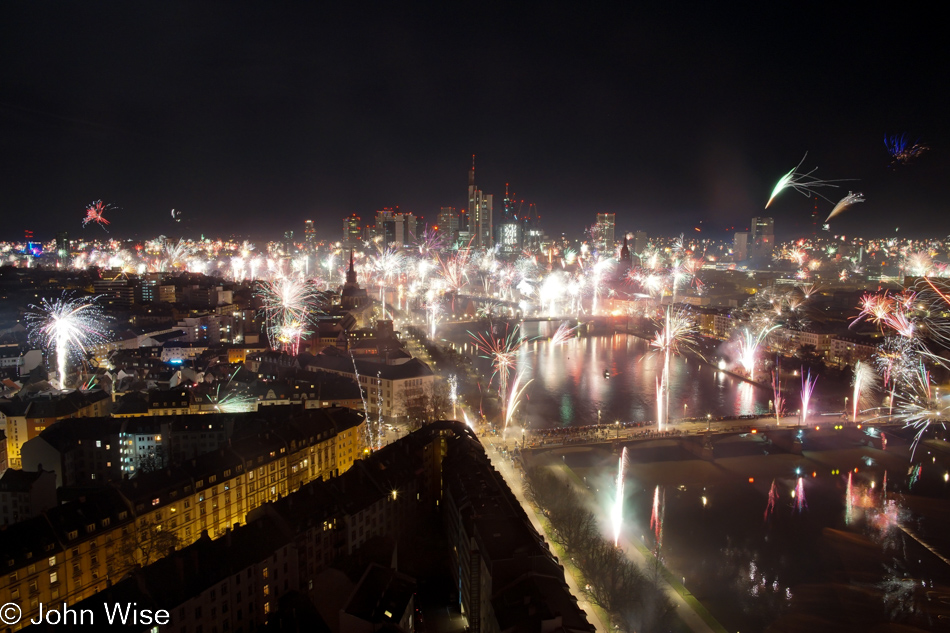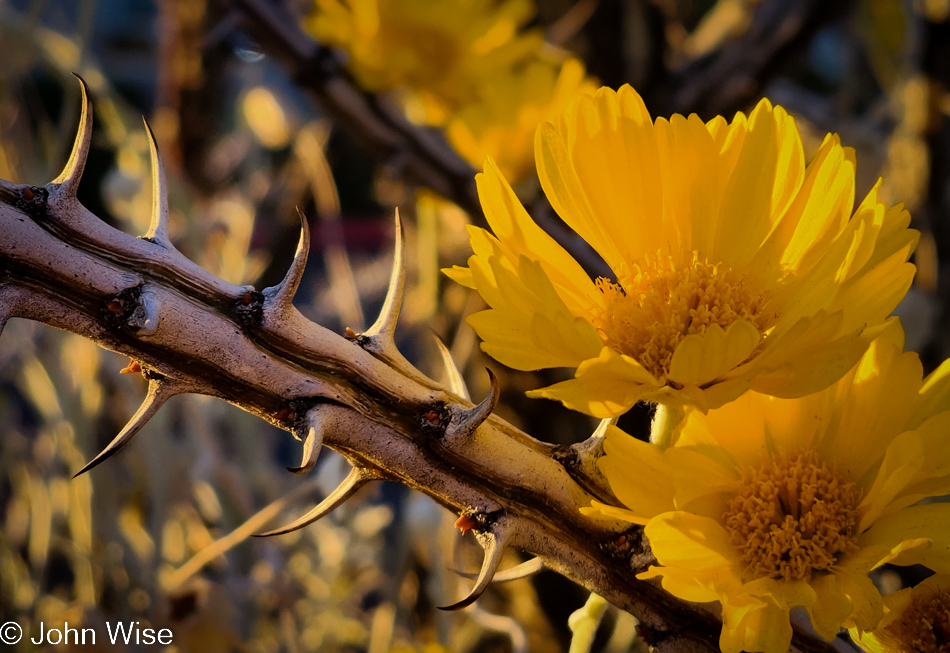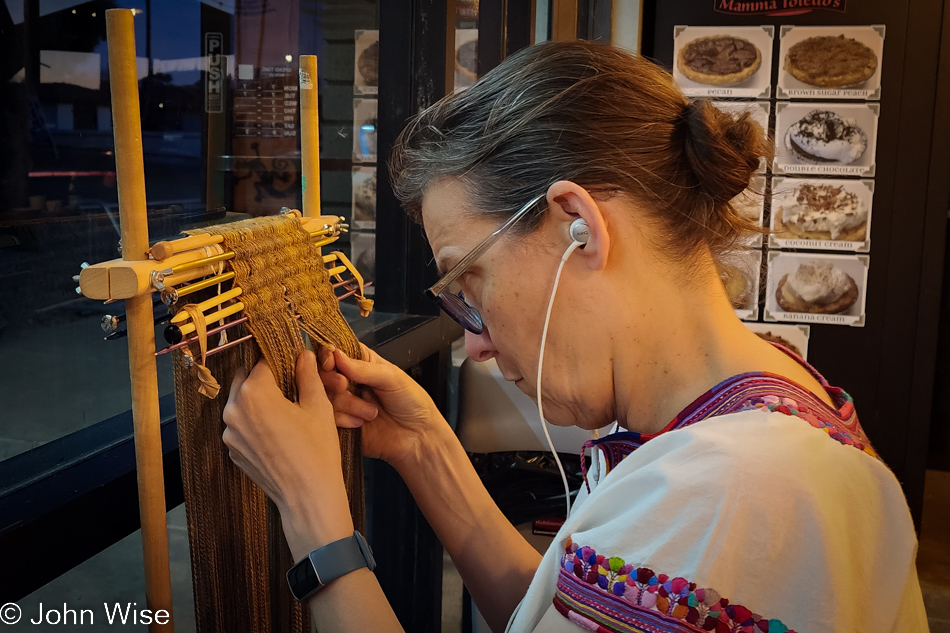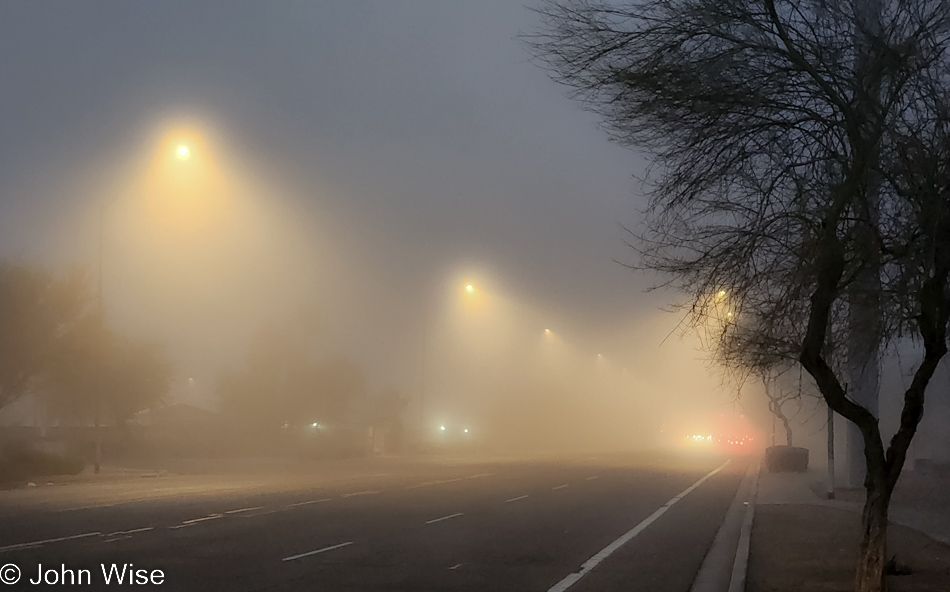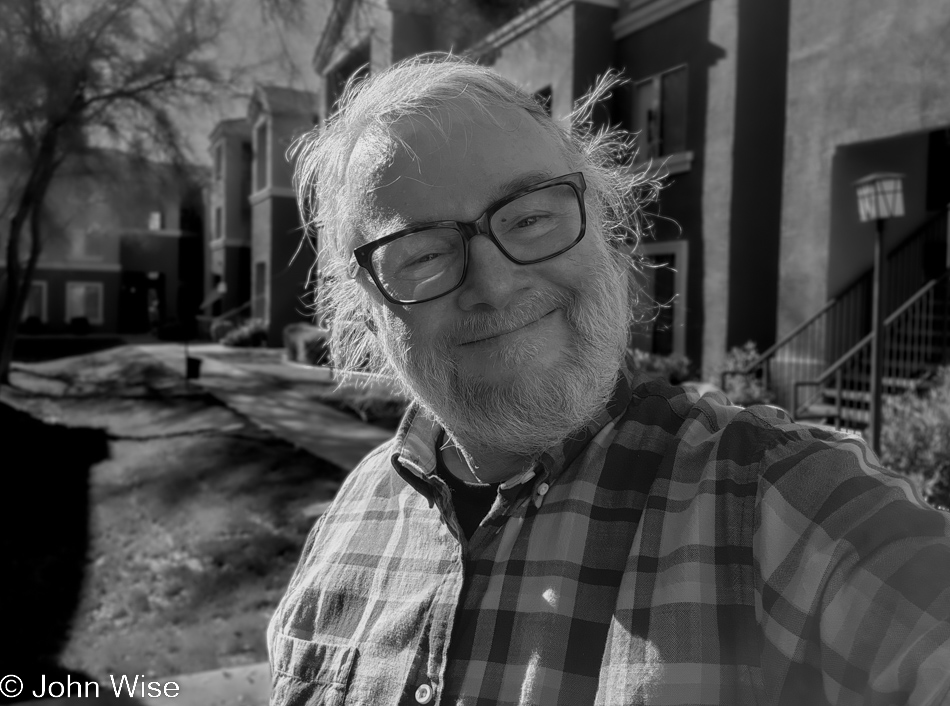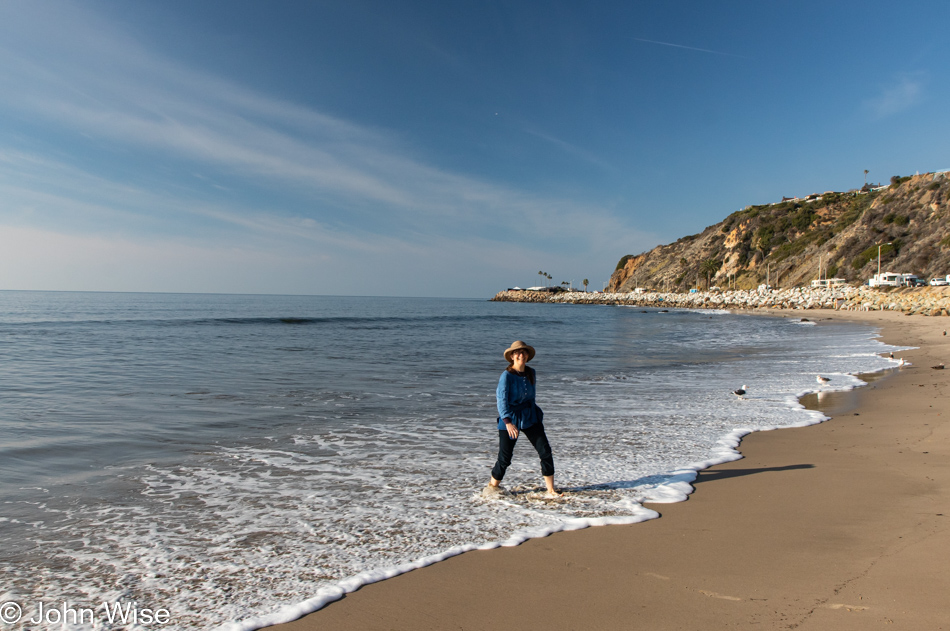
Back in the first week of January 2022, while others shivered under the chill of winter and probably snow, Caroline and I were over in Pacific Palisades, California, visiting the Getty Museum before also spending time at the Armand Hammer Museum, a botanical garden, the La Brea Tarpits, Little Tehran for Persian lunch and ice cream, and the San Pedro Fish Market at the Port of Los Angeles being serenaded by an Elvis impersonator.
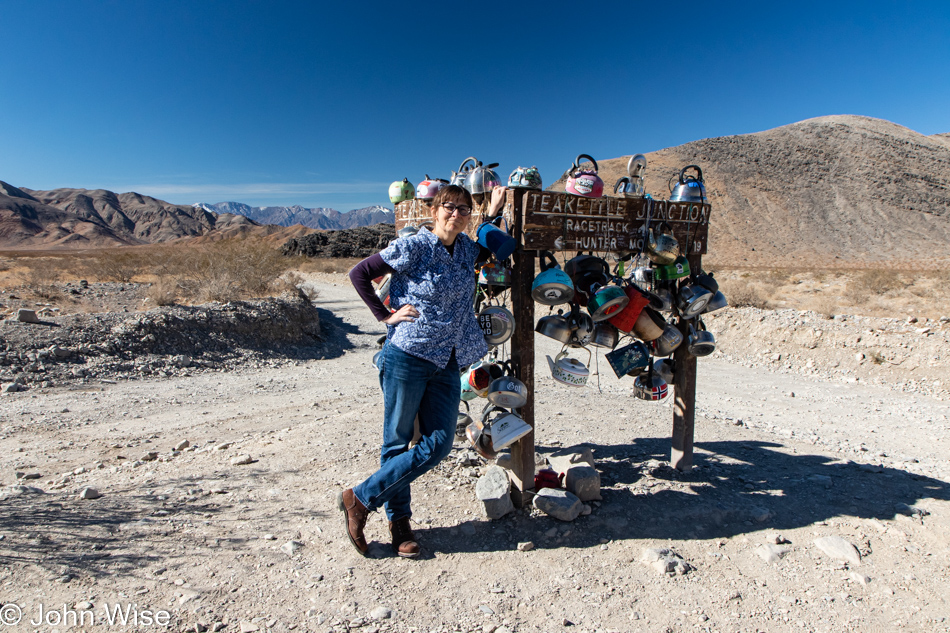
Still early in 2022, just two weeks later, we made yet another trip into Death Valley, except this one was taking the proverbial road less traveled. We’d booked an excursion out past Teakettle Junction to Racetrack Playa, something we’d wanted to do for decades. Don’t think for one moment we skipped the hot spring in Shoshone outside the park or communing with the wild donkeys of Beatty, Nevada.
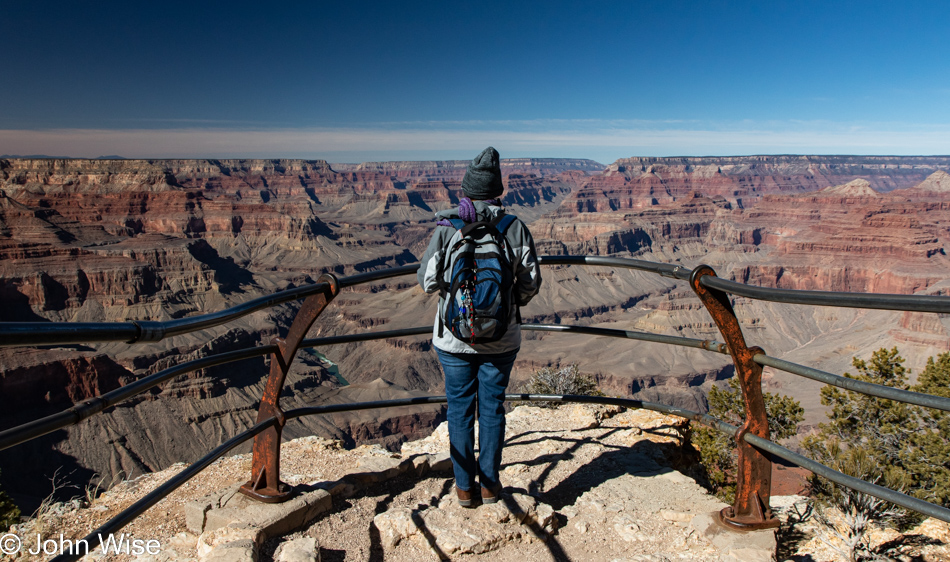
By February, with the weather on our side here in the desert southwest, we ventured up to the Grand Canyon. Hardly our first time here, and maybe the total number of visits is now unknowable, but this place is not something you know, even after your first dozen travels here.

In the golden age of travel, the average person out on the roads could know opulence as there was a time when presentation was an important aspect of knowing that your evening and morning times were as significant as the moments between. And then travel became a utility of capitalism, and what you do aside from handing some cash to those who offer a functional option to move and house you no longer mattered. — Our hotel on the Mexico-Arizona border in Douglas on a wonderful February weekend.
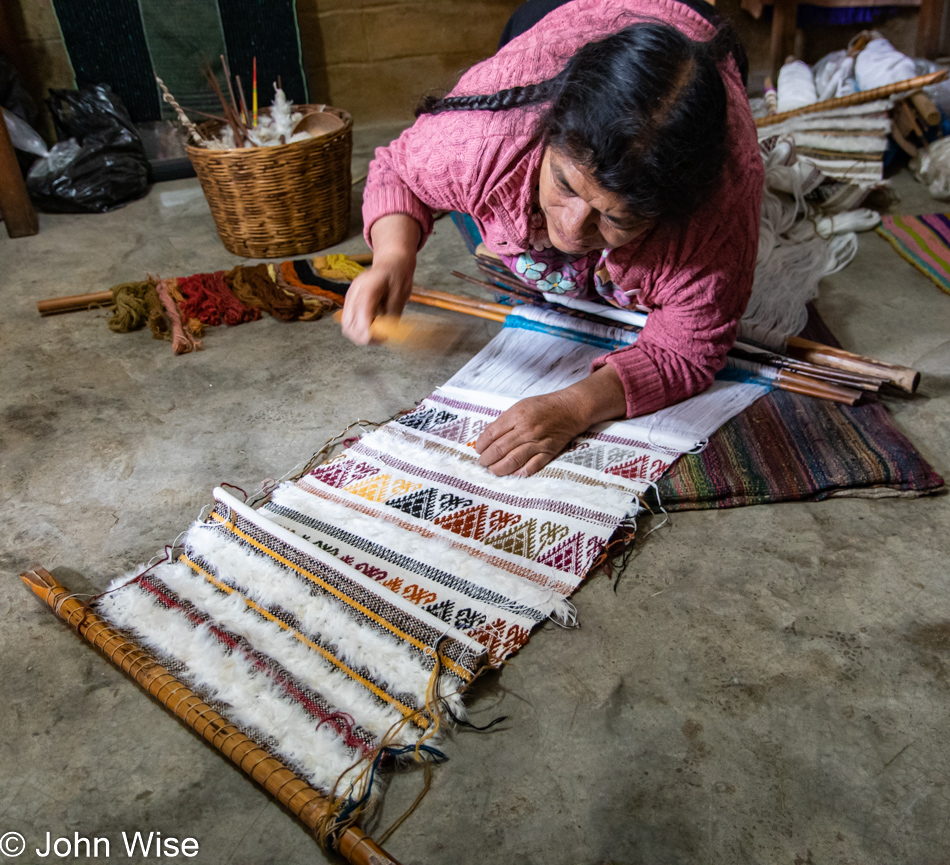
I could lament that March only saw us on vacation one time, but we were out for nearly a dozen days in Mexico, most of that down south in Chiapas, visiting Mayan fiber artists. Choosing this one image to represent 11 days immersed in Mexican culture out of a million impressions and thousands of photos was difficult, but isn’t that indicative of even trying to figure out where we’re going when a million options exist drawn from the billions of impressions we collect over our lives. — Mayan weaver in southern Mexico.
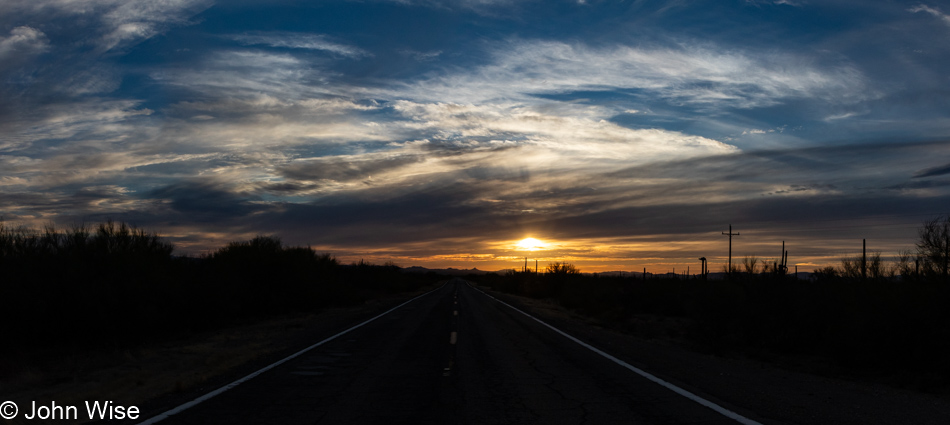
Even when you must travel in the dark with uncertainty about what lies ahead, there can be astonishing moments of beauty surrounding your experience, but if you never get out, how will you know that just beyond the limits of what you think you know, there are these places you never dreamed of? — On the way to Ajo, Arizona, in April.

Art needs to reflect society, a cultural moment in time; it should express something about who we are. We who are not creators should then invest moments to see what we cannot and visit a museum where those who care have taken time to create impressions of the zeitgeist. — April trip to Los Angeles County Museum of Art.
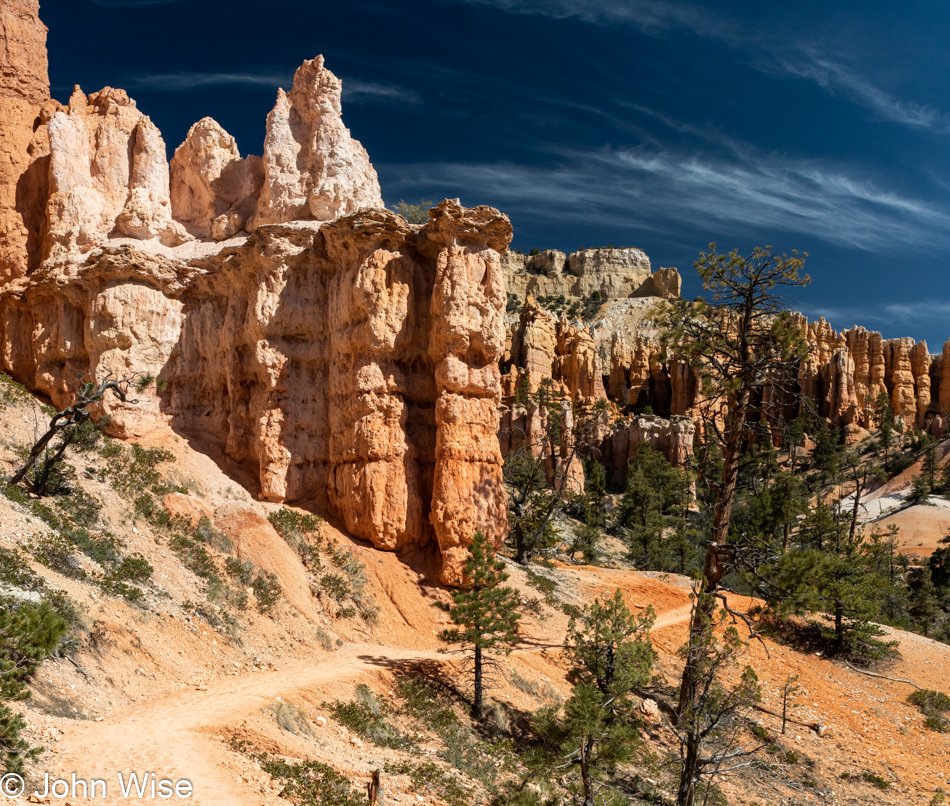
The exposed earth created by nature shows us the zeitgeist of time we didn’t live in. While museums and images over the internet and television might be easier to have firsthand experiences with, everyone with the means should venture into the parts of nature that can show them something about the history that existed long before people ever appeared on this planet. — It’s still April when we took this hike in Bryce National Park, Utah.

On our return from the Zuni lands of New Mexico in early May, let’s just say we were kind of on the moon.

After sunrise in Monument Valley, we left the well-traveled path for a rare visit to the nearby Mystery Valley. And that was our travels for the month of May.
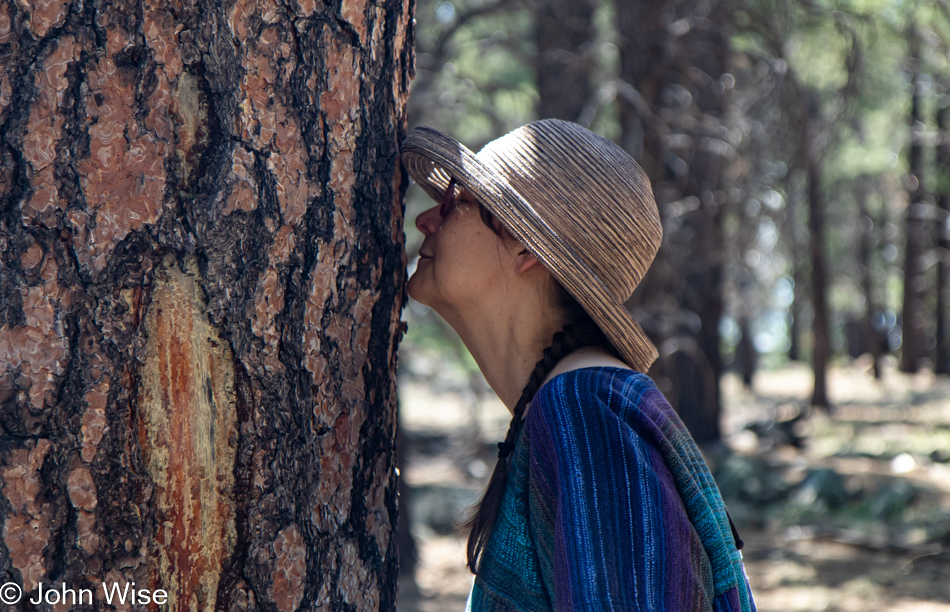
June didn’t go according to plan. We were supposed to be on a train from Winslow to Las Vegas, the one over in New Mexico, but Amtrak proved too unreliable for our schedule, and so instead, we licked our wounds at our poor investment and, for a consolation prize, seized on the opportunity to visit the Flagstaff Arboretum to smell the ponderosa pines, and sure enough, they smell something like a cross between vanilla and butterscotch. It wouldn’t be until the end of June that we’d head out again, but that will count towards July.
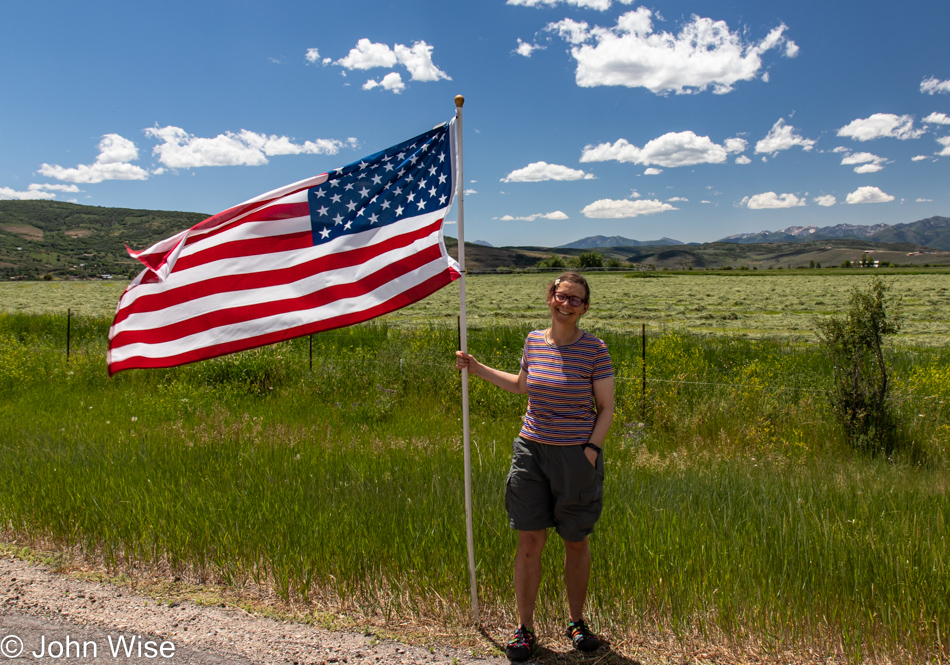
Happy 4th of July from somewhere in the middle of Utah.

We weren’t done with July, though; a call came in asking my wife to spend all of our money at the Santa Fe Folk Art Market, which we happily obliged as it was years of desire that would be quenched by finally visiting. There was the added benefit of hikes in the area, some of that famous New Mexican cuisine, and, of course, a visit to Meow Wolf that was enchanting as this photo is candy coated with almost neon colors.
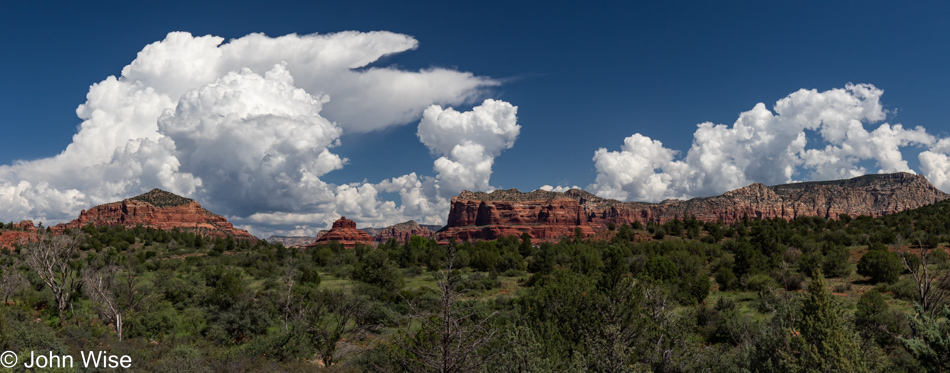
August was a mixed bag as a bunionectomy for Caroline altered what could be done. There’d be no long walks and it turned out no long drives. Though we enjoyed a day out in Sedona, Oak Creek Canyon, and Flagstaff, the start of the school season at NAU put a premium on lodging we weren’t going to indulge in. Then, on another day, the road we were traveling was covered in mud due to recent heavy rains associated with our monsoon season, and instead of trying to find a detour, we went for lunch and called it quits. Knowing what awaited us in just a few days, we weren’t feeling cheated.

It’s September, and we are obviously at the Monterey Bay Aquarium. Okay, we were on our way to breakfast before heading over to commune with the fishies, Caroline with her new spirit animal, the hagfish, and me with the always mesmerizing cuttlefish with their eyes that reflect the universe.
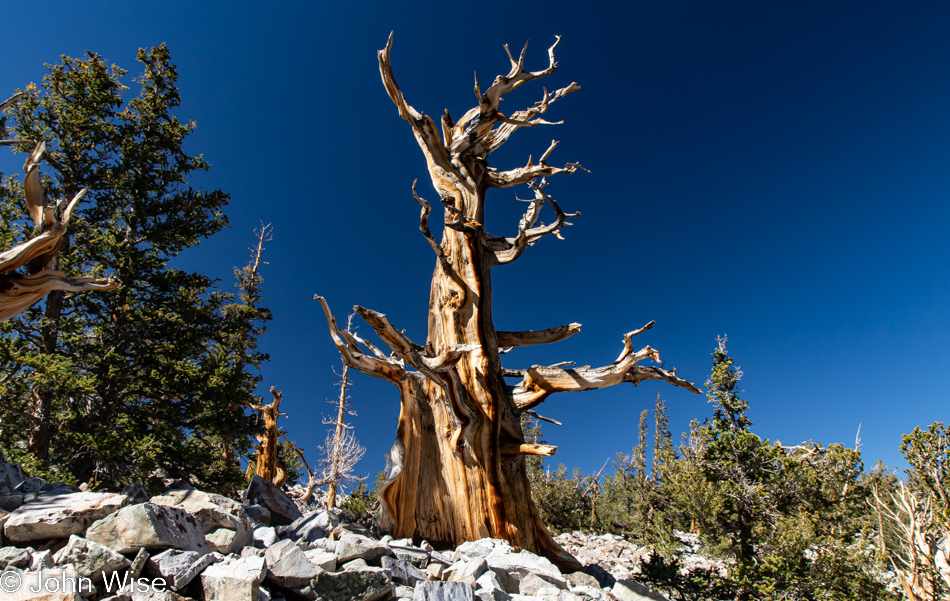
We weren’t done with September yet as we needed to pay a new visit to the Great Basin National Park in Nevada to see if the bristle cone pine trees appeared to have aged. I guess after standing here for some 4,000 years, a decade or so wouldn’t make an appreciable difference, well, not to us, anyway. By now, I have to admit to some travel fatigue as we’ve been away from home for 66 days, and we still have 3 or 5 more trips ahead of us.
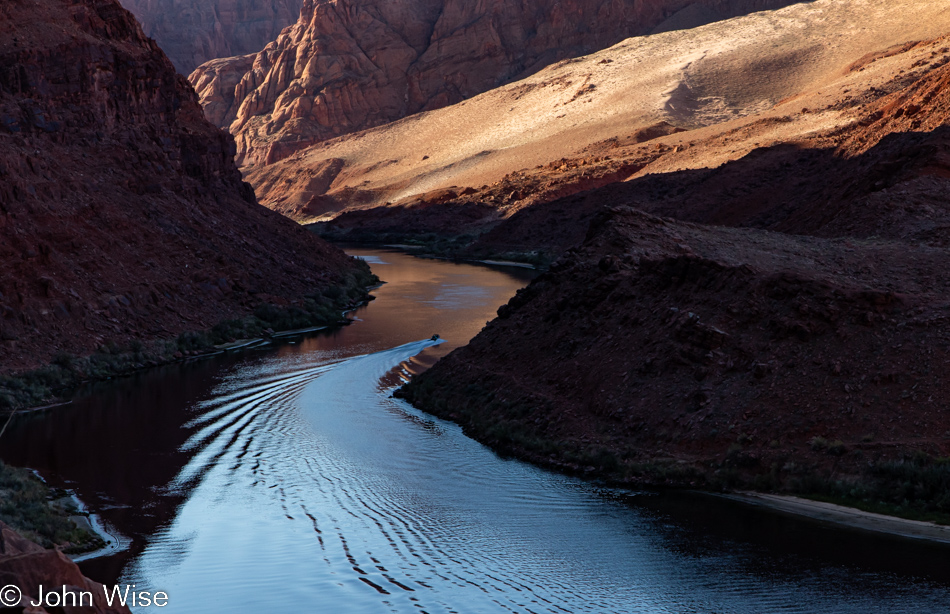
Wow, were we really home for more than two full weeks? You betcha, but here in the middle of October, we finally broke out of being couch potatoes, though we don’t own a couch, and pointed our car north. Grand Canyon North Rim, here we come. First up, we had some hiking to do, and we did it all, I do mean all of it. The morning started out up near Lees Ferry for a hike up over the Colorado River; for lunch we hiked up the Paria River into its canyon, not far but far enough. Next up was Soap Creek Canyon, where we went to where we could go no further. Time to check out some condors about to be released in the wild before finally taking ourselves to the Grand Canyon for its last night of business before closing for the season.

We don’t celebrate Halloween, but we do believe in treating ourselves, and so it was when we drove east to Duncan, Arizona, for a weekend at the Simpson Hotel, visiting with the proprietors we’ve become friendly with. By this time, we know that Caroline will be in for another bunionectomy, but this time on the other foot. This means that this trip coming up in November will be the last for the year.
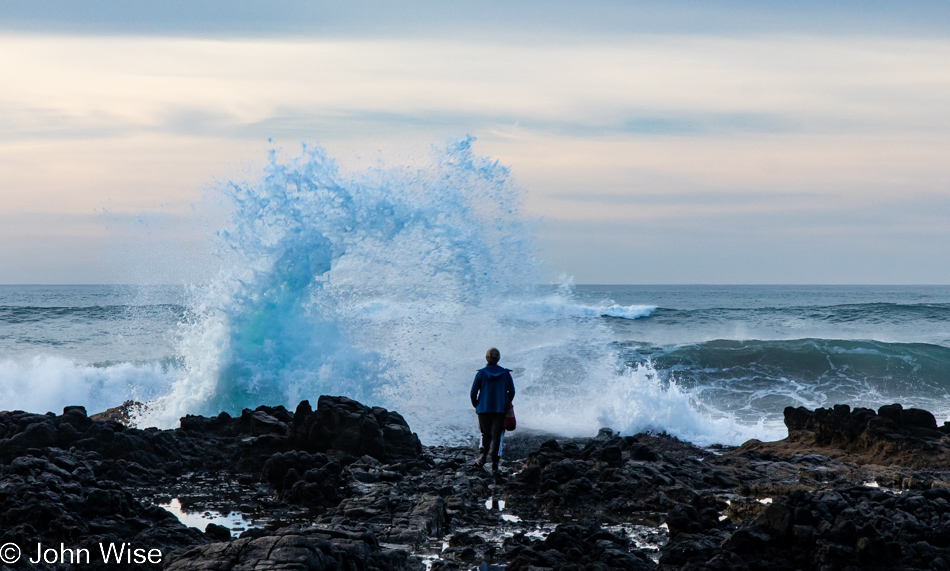
Here we are at the 19th and final trip of 2022. Twelve days on the Oregon coast is about as good as it gets unless you consider any of the other 18 trips this year, which were all spectacular, too.
It would be obvious to most anyone seeing this post: we enjoy our travels. They might also think we have extraordinary access to financial resources. I’ve not worked in 5 years while Caroline works as a database programmer for a small company that allows her to take 20 days of paid vacation. Living frugally offers us a wealth of opportunities that we choose to use in ways that speak to our sense of gathering big impressions and a ton of memories that should last a lifetime.
Our discipline of only using what we need has allowed the two of us not just these 19 adventures over the course of a single year but 302 others since the beginning of the year 2000. Over the course of the intervening 22 years, we’ve ventured away from home for a total of 1,371 days, averaging about 13 getaways per year. That’s close to 60 days per year of what we consider vacation time, though much of it might just be a long weekend and, on occasion, a day trip, even if it’s all the way to Los Angeles and back to Phoenix in a day, in a car at that! I only know these numbers right now because I’ve just finished a complete index listing of our travels featured in the right column of this blog. There are still photos missing as I’ve not always taken my blogging responsibilities as diligently as I should have, but where I have them, they will be added.
There is no encore to this type of indulgence; there is only the continuation of trying to accumulate the experiences we believe lend a sense of the extraordinary to our lives and shared time.
Regarding 2023? Of course, there are some tentative things on the itinerary, actually a lengthy spreadsheet because who could keep track of all these details that will be worked on in the new year? The following is under consideration with a couple of things already firm: Europe, New York City, Chicago, Craters of the Moon in Idaho, Kartchner Caverns, back to Santa Fe and the Folk Art Market, and likely another Thanksgiving visit to delightful Oregon. Obviously, that’s simply not enough for us to consider ourselves human, and other travels will have to fall into our plans as long as we’re capable, healthy, and in love.
Update: It’s December 20, 2023; when I dipped back into this post and reread my predictions for the year that’s been, I thought an update was in order. We never made it to New York City, Chicago, Craters of the Moon, or Oregon, but we did spend nearly a month in Europe with our first visits to Norway and Sweden in addition to returns to Germany and Denmark. Kartchner Caverns and the Santa Fe Folk Art Market were also enjoyed. A trip to Southern Arizona saw us visiting Coronado National Memorial and a bunch of snakes, while in April, following my birthday, we did some serious hiking in Death Valley. Up on the Navajo Reservation in June, we visited the Sheep is Life festival, and in July, we enjoyed a day trip to Kaka, Arizona, followed two weeks later with a tour of the Mount Graham International Observatory. Our last trip of the year will be for New Year’s over in Duncan, Arizona, for some hopeful Sandhill Crane viewing.
